Physics 2 Exam 1
1/83
There's no tags or description
Looks like no tags are added yet.
Name | Mastery | Learn | Test | Matching | Spaced |
|---|
No study sessions yet.
84 Terms
One dry, winter day you are dragging your feet on the carpeted floor. This causes electrons from the carpet to accumulate in your body, especially on your skin. This causes electrons from the carpet to accumulate in your body, especially on your skin. You are about to touch a metal doorknob when you suddenly get shocked. Which statement best describes what has happened?
Electrons jumped from your skin to the doorknob because your skin was at a lower potential value than the doorknob, decreasing the energy of the system consisting of the electrons and the V-field
Which of the following is the best explanation for why rubbing a PVC rod with fur causes it to become electrically charged?
During the rubbing process electrons are transferred from the fur to the PVC rod
You connect metal object 1 and metal object 2 to a wire. As soon as you connect them, electrons flow from object 1 to object 2. This means that:
The surface V value of object 2 was higher than the surface V value of object 1
A proton and an electron are released from rest a few centimeters apart, far from any other objects. Which of the following statements must be true about them as they move toward each other?
Their kinetic energy keeps increasing
A solid metal sphere is given a net charge -Q. How is the charge distributed in or on the sphere?
It is uniformly distributed on the surface of the sphere
Two ping pong balls attached to strings are brought close to one another. The ball on the left has a negative charge and the ball on the right has no electrical charge. Which of the following pictures shows how the two balls will rest?
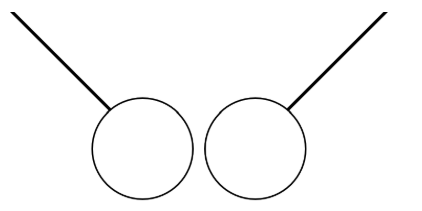
Balloon A has charge q, and identical mass balloon B has charge 10q. You hang them from threads near each other. Choose all of the statements with which you agree
The magnitudes of the force A and B exert on each other are the same
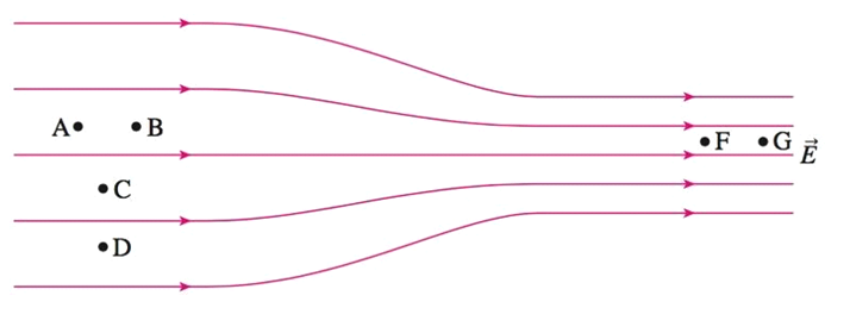
The following questions relate to the diagram below, which shows E-field lines in a region of space. Note that the distances between A and B, between C and D, and between F and G are all equal. A small negatively charged object is moved by an outside agent (I) from A to B, (II), (III) from A to D, and (IV) from F to G. Which of the following completely ranks the magnitude of the work done on the object in these four cases, from smallest to largest?
WIV<WI<WIII<WII
Two identically charged balls are a certain distance apart. The vectors in the figure show the magnitude and direction of the electrostatic force on each ball due to the other one. Suppose that the charge of the left ball is now doubled (represented by two plus signs). Which vector diagram best represents the forces that are now exerted on each of the two balls?

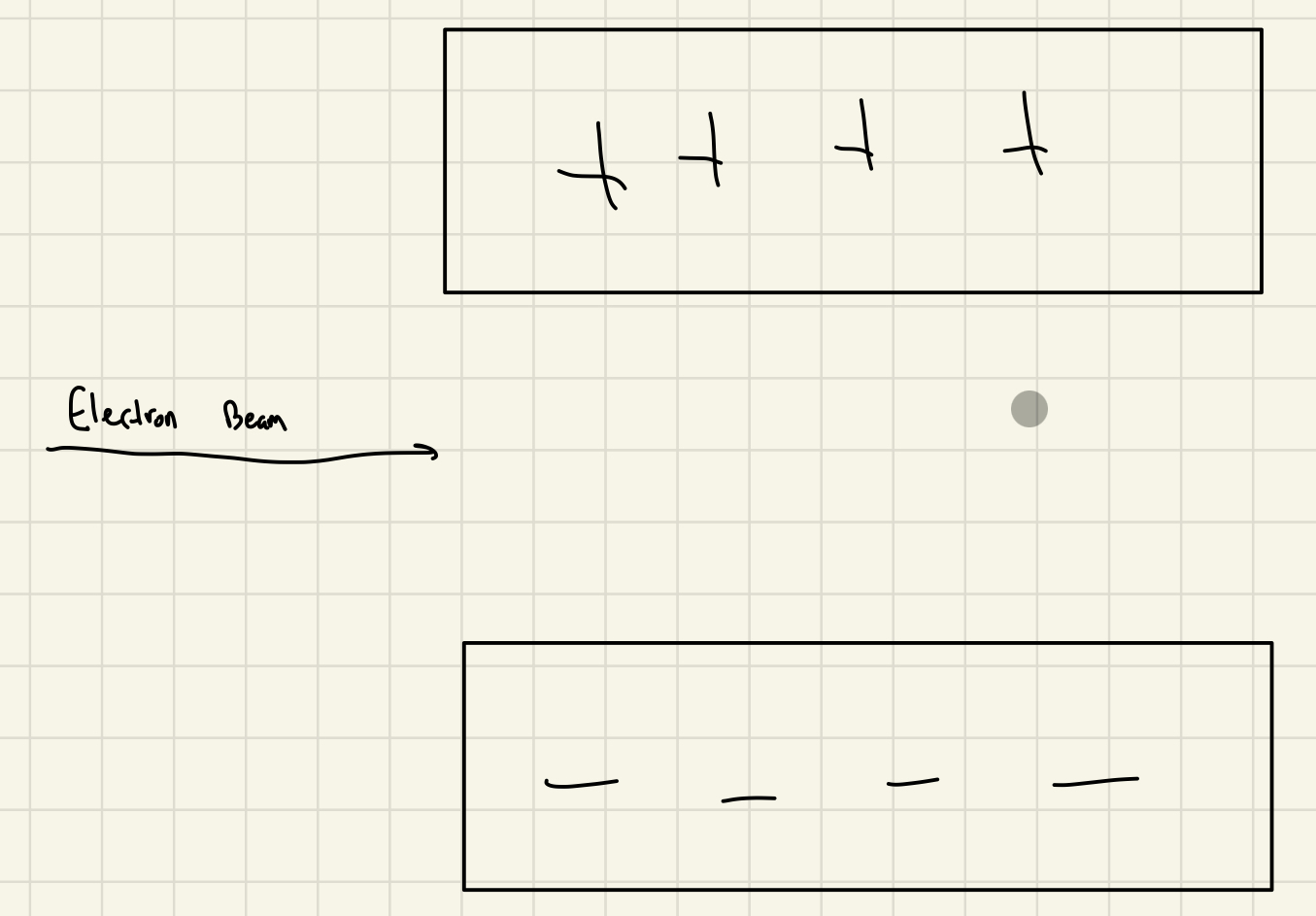
A beam of electrons is shot between two charged plates as shown below. Which way does the beam of electrons deflect and why?
The electron beam deflects upwards since the electrons are negatively charged and the E-field between the plates points downward
Which of the following occurs when two objects are rubbed against each other? Choose all that are correct
No new charges are created
They acquire the opposite charge
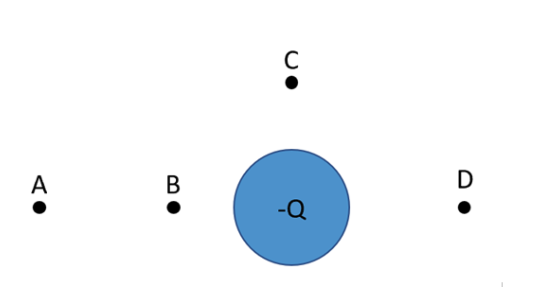
At which of the four points surrounding the charged object below is the magnitude (not the value) of the V-field the greatest?
B
If you place a block made of a dielectric (insulating) material in an external uniform electric field E0 so that two opposite sides of the block are perpendicular to E0, what will be the magnitude and direction of the total E field inside the block?
Magnitude: less than E0 but more than zero; direction: same as E0
Two objects have the same net electrical charge as one another but different electric potential (V) values. When you connect them:
Electrons will flow from the one with the lower electric potential to the one with the higher electric potential
A metal sphere has a net electrical charge of +40nC. What can we say about the electric potential (V) inside the sphere?
Electric potential is a constant value at all points inside the sphere
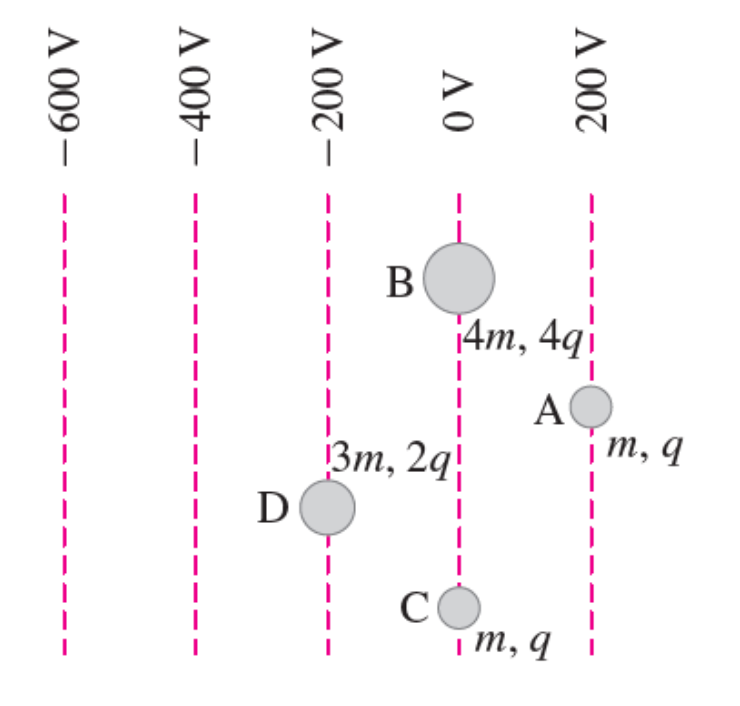
Four charged particles A, B, C, and D are placed in an electric field as shown in the figure below. Vertical lines indicate equipotential surface of the V field. All particles are initially at rest. When they are released, they all start moving to the left. Relative masses and charges of the particles are indicated in the figure. Assume the particles are far from each other so they do not interact, and ignore forces exerted by Earth on the particles
Kb>Ka=Kd>Kc
A positively charged object is brought near, but not touching, a neutral electroscope as shown below. What is the charge on the top sphere of the electroscope while the tube is held near?
Negative
A glass rod is rubbed with a cloth and acquires a positive charge. During this process the cloth
Removed some electrons from the glass
You have two metal spheres. Sphere 1 is twice as large as Sphere 2. Sphere 1 has a charge of 10nC and Sphere 2 also has a charge of 10 nC. When you connect the two spheres with a metal wire:
Electrons flow from Sphere 1 to Sphere 2, until the electric potential (V) at both their surfaces reach the same value
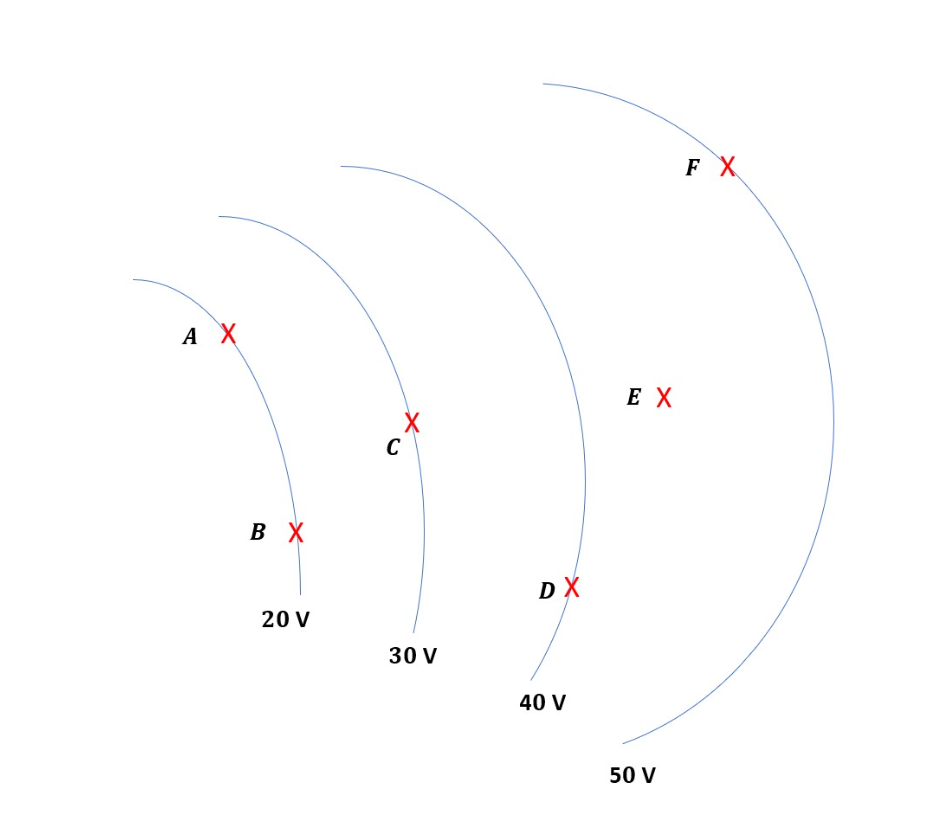
A region with an electric field is represented below with the V-field lines. Six locations, A through F, are marked with red Xs. In which location(s) would you place a -1C particle so that the particle-field system has the smallest value of electrical energy?
F
Two objects have the same surface electric potential (V) value but different amounts of charges. When you connect them:
There will be no net transfer of electrons between the objects because they have the same surface potential
A system consists of two electrically charged particles. The electrical energy in the system increases as the particles are moved further apart. What must be true about these two particles?
One particle must be positively charged and one particle must be negatively charged
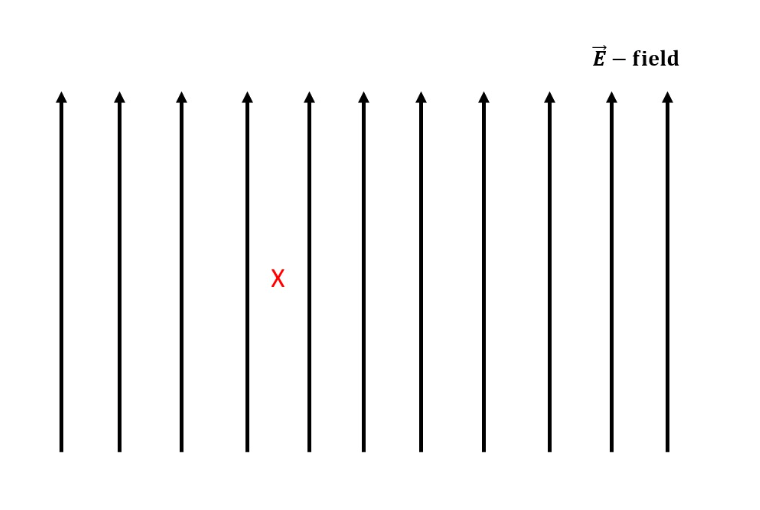
The figure below shows a region with a uniform E-field. In the location marked with a red X, a negatively charged particle is placed. In which direction does the E-field exert a force on the particle?
Downwards
A solid metal sphere is given a net charge -Q. How is the charge distributed in or on the sphere?
It is uniformly distributed on the surface of the sphere
Two electrically charged objects with charges q1=2.9×10^-8C and q2=-8.0×10^-8C are placed with object 1 at position x1==0 and object 2 placed at position x2=1.0m. Where should you place a third electrically charged object so that the net electric force exerted on it by the first two objects is zero?
At position less than x=0
A small metal ball has a net negative charge. This is because
The ball contains more electrons than it does protons
Which of the following are different for protons and electrons?
The signs of their electrical charges
Their masses
A hollow, metal box made of a conducting material as shown below is placed in an external electric field as shown by the E-field lines. What is the net E-field value at a location inside the hollow of the box but not exactly the same as the center?
It has a value of 0

The electric field in a region is represented by the E-field lines shown below. Points A and E are next to one another horizontally. The distance between points A and points B is the same as the distance between points C to D, which is twice the distance between points E and points F. An electron (q=-1.6*10^-19) starts at position B. Rank the other five points by the amount (not just the magnitude) of work required to move the electron from B to that point
D>C>F>E=A
A balloon is rubbed on a sweater. Afterward, they attract to one another. Which of the following is the best explanation why?
The balloon picked up electrons from the sweater, making the balloon negatively charged and the sweater positively charged

Objects with charges +Q and +4Q are situated as shown below. At which point could you place a third object of charge +Q so that it would be in equilibrium?
D
As a proton naturally moves in a particular direction while in a region where there is an electric field
It is moving from high potential to low potential and electrical potential energy of a system consisting of the proton and the electric field is decreasing
When an object gets charged by rubbing, where does the electric charge originate?
The process of rubbing leads to a redistribution of charge, not the creation of charge
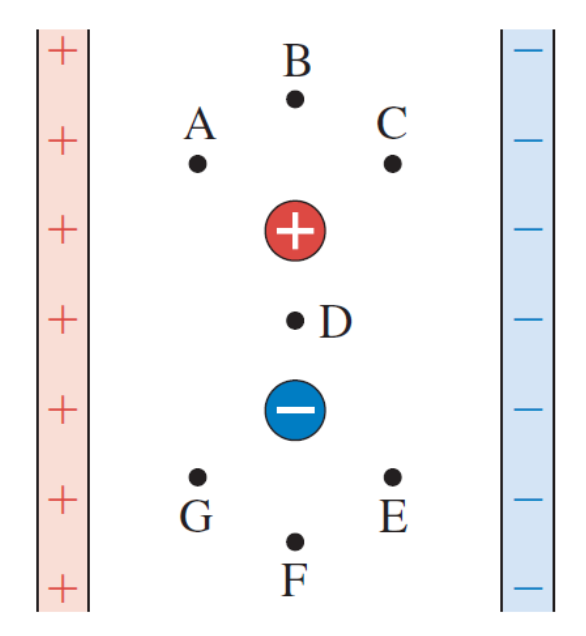
An electric dipole is placed between the oppositely charged plates as shown in the figure below. At which of the marked points could the net E-field be zero? Choose all possible answers
A and E

Which one of the arrows shown in the figure best represents the direction of the E-field between two uniformly charged metal plates?
A
A small metal ball has a net positive charge. This is because:
The ball contains more protons than it does electrons
You have two metal spheres. Sphere 1 is the same size as Sphere 2. Sphere 1 has a charge of +10 nC and Sphere 2 has a charge of +20 nC. When you connect the two spheres with a metal wire:
Electrons will flow from Sphere 1 to Sphere 2, until the electric potential (V) at both their surfaces reaches the same value
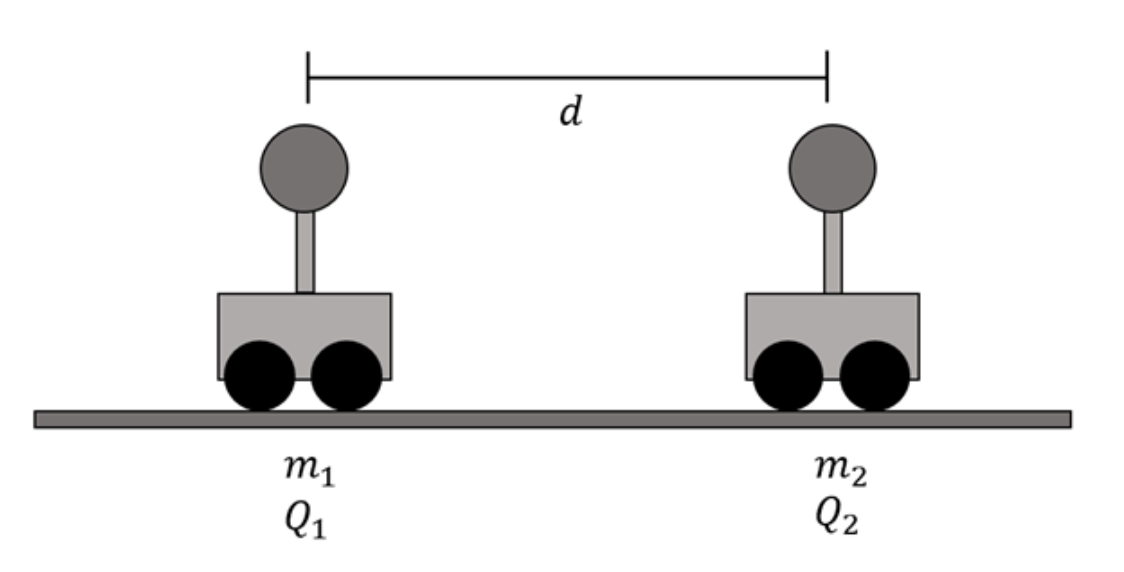
Two charged conducting balls attached to carts on a frictionless track are placed a distance d apart as shown in the picture below. The carts have masses m1 and m2 and charges Q1 and Q2 respectively. If m1=0.50kg and m2=0.25kg and charges Q1=2nC and Q2=8nCm, compare the forces exerted on the carts and the accelerations of each cart
Cart 1 and Cart 2 have the same force exerted on them and Cart 2 has a greater acceleration
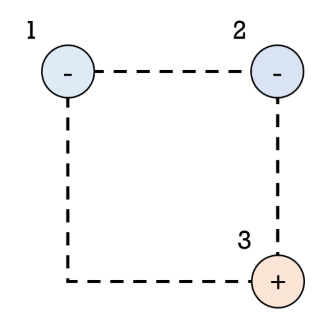
Consider the three stationary charges arranged on the corners of the square shown below. All charges have equal magnitudes. What is the direction of the sum of electric forces exerted on charge 2?
If you place a block made of a dielectric (insulating) material in an external uniform electric field E0, so that two opposite sides of the block are perpendicular to E0, what will be the magnitude and direction of the total E-field inside the block?
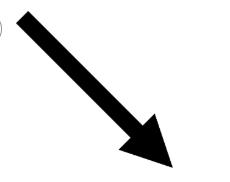
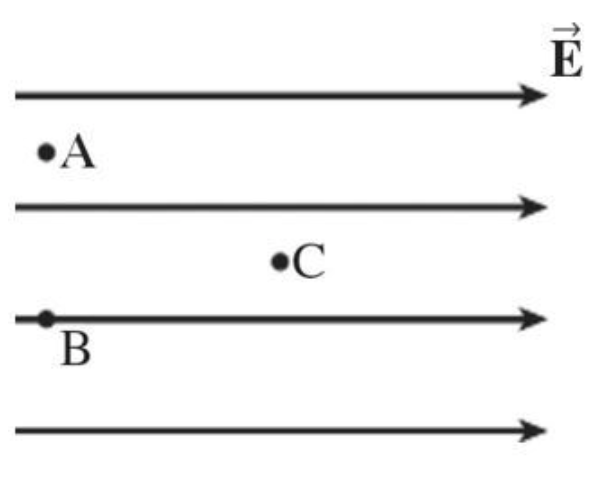
A region of space contains a uniform electric field, directed toward the right, as shown in the figure. Which statement about this situation is correct?
The potential points A and B are equal, and the potential at point C is lower than the potential at point A
Two objects with charges +q and +2q are separated by a distance r and are sitting on fixed stands. You slowly move one of the objects closer to the other so that the distance between them decreases by half. Considering the two objects as the system, which statement is correct?
The electric potential energy of the system increases
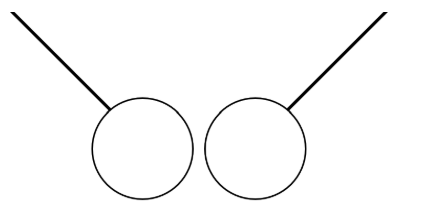
Two ping pong balls are brought close to each other and attract one another as shown below. Which of the following statements is true?
At least one of the ping pong balls has an electrical charge
What does the E-field at point A, which is a distance d from the source charge, depend on? (More than one statement may be correct)
The magnitude and sign of the source charge
A negatively charged balloon is brought near a neutral wall. What occurs and why?
The balloon is attracted to the wall because the atoms in the wall become stretched- the positive side of the atom attracts the negatively charged balloon
What does the V-field at point A, which is a distance d from the source charge, depend on? (More than one statement may be correct)
The sign of the source charge
The distance of point A from the source charge center
The magnitude of the source charge
A proton is accelerated from rest through a potential difference delta V and gains a certain amount of speed v0. If it were accelerated instead through a potential difference of 2 delta V, what speed would it gain?
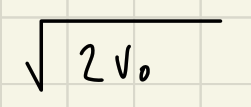
Two objects have the same surface electric potential (V) value but different amounts of charges. When you connect them:
There will be no net transfer of electrons between the objects because they have the same surface potential
Which explanation agrees with our model of electric charge? Choose all that are correct
If an object is charged positively by rubbing, it has lost negatively charged particles
If an object is charged negatively by rubbing, it has acquired negatively charged particles
During some process, 100 electrons are removed from an object which is initially electrically neutral. What is the net electrical charge of the object after this process?
+100e
As an electron naturally moves in a particular direction while in a region where there is an electric field
It is moving from low potential to high potential and electrical energy of a system consisting of the electron and the electric field is decreasing
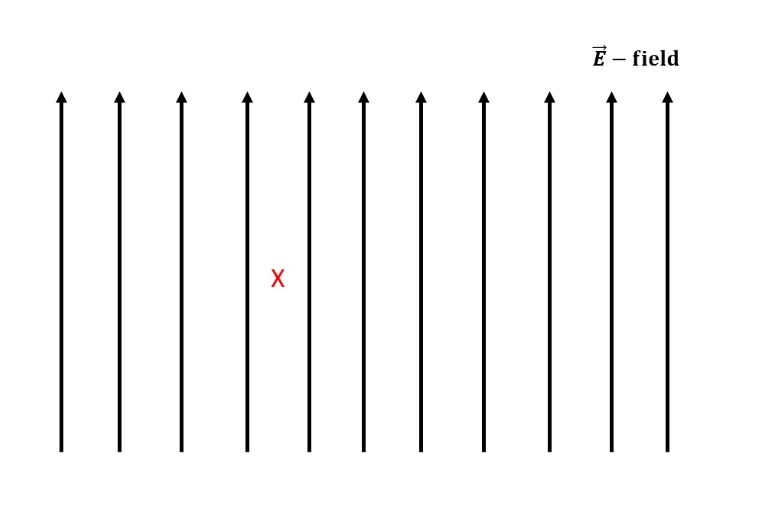
The figure below shows a region with a uniform E-field. In the location marked with a red X, a neutron (a neutral particle) is placed. In which direction does the E-field exert a force on the particle?
No force is exerted on the particle in that region
A hollow metal box is placed into an external electric field (shown in orange). Which of the following correctly shows the total electric field inside the box (shown in green)?
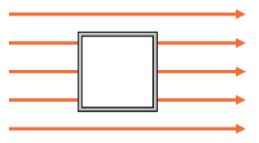
You have two metal spheres. Sphere 1 is twice as large as Sphere 2. Sphere 1 has a charge of +10 nC and Sphere 2 also has a charge of +10 nC. When you connect the two spheres with a metal
Electrons flow from Sphere 2 to Sphere 1, until the electric potential (V) at both their surfaces reaches the same value